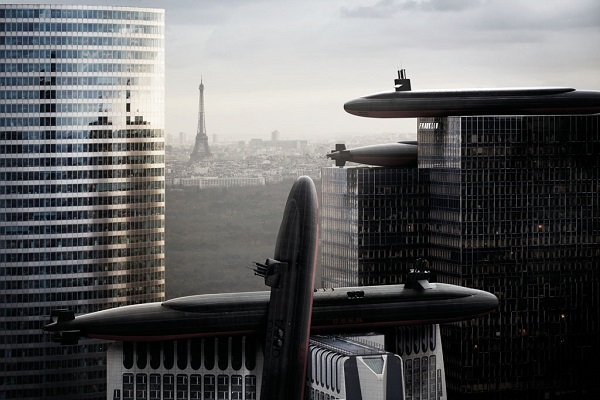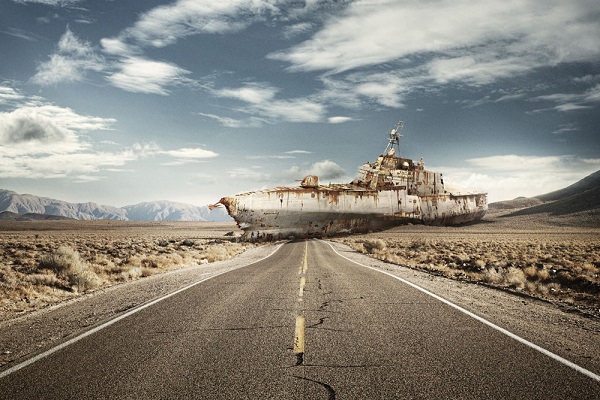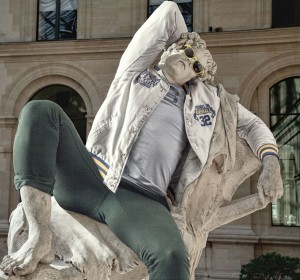Artist of the Week 3/6-3/12: Artist Léo Caillard Explores Cultural and Social Change in the Digital Era
GALO: The concept behind this collection is quite original with sculptures donning sunglasses, denim jackets and red sneakers. What is the message you are trying to convey with the culmination of classical art and modern fashion, and how was this idea conceived in the first place? Were you fascinated with the evolving waves of the contemporary subculture, which derive from trends of the not so distant past?
LC: In our modern society, the way we look, gives a lot of information about who we are. That’s the power of clothing. It makes you part of a “community” (your [look] can be [classified] as hipster, fashionista, grunge, dandy, hip-hop, etc.). Dressing antique statues is a good way to reveal the difference between somebody [who is] naked and somebody [who is] dressed up. As soon as the statue has clothes on, she or he is not the same person anymore, it becomes somebody else with an “attitude,” depending on the style of fashion they’re wearing.
GALO: Where do you draw you greatest inspiration or influence from when discovering or developing concepts for your collections?
LC: Looking at the world changing, every day and all the time, is the most important part of my inspiration. On the other hand, I try to go as much as possible to museums and art exhibitions. Looking at other art is also a great source of inspiration.

An image of a man looking at a digital semblance of a painting, which mimics the one on his tablet screen as seen in the series “Art Game” by photographer Léo Caillard. Photo Courtesy Of: Léo Caillard.
GALO: Your collection Art Game seems to parallel Street Stone, carrying over the theme of modern art emerged into classical pieces. In contrast, Art Game specifically focuses on the inside world of the Louvre Museum and creates a feeling of noise or disruption by incorporating modern day technology into the photograph. One particular photograph in this series that is especially telling of modern-day society’s obsession with technology, features a statue of Venus holding a gentleman’s iPhone while he tries to wrestle it away. Do you feel that we, as a society, have lost our ability to separate ourselves from modern-day advancements?
LC: Digital technology is a complete revolution of our society. It completely changes the way we look at art, that’s what I tried to express in the series Art Game.
I feel we definitely can’t separate ourselves from modern day advancements anymore. That’s why it’s important to think about the limit of technology. Unfortunately, it won’t replace everything, and we need to keep technology as a tool and not like something important in our life.

An image of a woman interacting with a digital image of a painting, which mimics the one on her tablet screen as seen in the series “Art Game” by photographer Léo Caillard. Photo Courtesy Of: Léo Caillard.
GALO: The irony behind these two collections is that they are done by manipulating photographs with software such as Photoshop. Do you feel that modern art has been able to articulate certain concepts and perspectives more clearly than in the past due to these tools? Or do you feel that these tools in any way take away from the artistic aspects of projects?
LC: I don’t feel that using new technology as an artist is something important. I use these tools because it’s my way of creation. Artists try to explore new ways of creation every time they can and digital technology helps a lot for new styles of art. But it’s a tool, and not something that artists have to use to make something new.
GALO: Each of your collections possesses a clear theme with some sharing a very specific sentiment and more weight than others. War Games truly manages to capture a theme that has prevailed throughout history. Each photograph displays the serene and almost calming natural landscapes of France with either rusted, decaying war crafts of the past, or the alive and ever-threatening weapons of today. This provides a contradicting scenery with a powerful message. Is this concept in any way reflective of a specific time period or is it more reflective of our human history in general; the way that the human race never truly finds peace, whether metaphorically or literally, as new wars erupt?
LC: War imagery is everywhere: in newspapers, video games, on TV, etc. War imagery is a powerful representation of human violence and the desire for domination. But at the end of the day, [it is] completely useless after [a] few years…
In Paris, we have a big district office named “La Defense.” People come every day to work in this area. The name of this place gave me the idea to bring back some of these vehicles, using 3D and photo manipulations, in the middle of our cities. I did that in Paris, London, NYC, and keep [creating] some new pictures for this series.
I don’t want these pictures to be violent; I just want to work on the concept of an iconic representation of war. Making people think about the size and shape of these massive vehicles when looking at them in regular cities that they know on a regular basis — not on TV captured in foreign countries.

An image from the series “War Game” by photographer Léo Caillard. Photo Courtesy Of: Léo Caillard.
GALO: When examining your three collections, there seems to be a reoccurring theme. It appears that you may feel that we are becoming detached from humanistic bonds and removed from the more compassionate and moving parts of life. Have you drawn these feelings or opinions from personal experiences or relationships? And would you say these three collections differ from some of your older projects, or do they carry on the thematic metaphor that these three possess?
LC: I am 27. I was born in 1985, and the world I live in is changing from my childhood. Pretty fast and pretty badly, indeed… I am very optimistic about our world, but as an artist, I have to be realistic and spread a strong message about our humanity. We believed that everything would be possible with technology and natural resources, but we were wrong. We forgot that humanity needs something else: culture, art and real social interactions. Artists have to focus on these subjects to bring them back in our social life.
As an artist, it takes time to understand that the form and the meaning of your creation is something that you don’t completely control. These three collections were the basement of my creation, the deep subject of my photography — in the form as well as in the subject. Combining elements from different time periods to make sense and talk about our modern society that’s my way of expression in photography, and I think I found the right form to express my ideas. Before, I was too young and too messy, I guess. Time is everything.

An image of a boat that has rusted and withered away, which is from the series “War Game” by photographer Léo Caillard. Photo Courtesy Of: Léo Caillard.
GALO: Would you say that your work speaks largely to the French population, or do you think these are concepts that carry over to modern-day society as a whole? Who is your target audience with these pieces?
LC: I don’t want to speak to French people in priority. Actually, I don’t give any importance to nationality. I was born in a globalized world. I am a citizen from the world, and I hope my art concepts carry over to modern-day society as a whole. I don’t have any target; I would like to share my ideas with the most people possible. The Internet and modern media give me the opportunity to do that — another chance young artists have to take!

